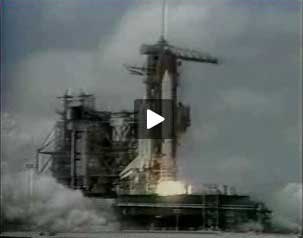In the middle 1980s, GTRI was awarded the first in a series of contracts related to the International Space Station. Early work centered on antenna for the station's command and control needs, as well as operations associated with co-orbiting satellites.
Researchers also tackled the design and specifications for a robot that could perform certain types of experiments on the orbiting station while remotely controlled from Earth. Another project involved the design of an electric power system that used large dish sunlight collectors.
In 1987, GTRI researchers unveiled their first light detection and ranging system, heralding a new field of study for Georgia Tech. LIDAR works in a similar fashion to radar, but with light instead of radio waves.
The Senior Technology Guidance Council
Also, in 1987, the Senior Technology Guidance Council was formed to identify internally funded research opportunities based on GTRI's capabilities as a whole rather than by any individual lab. Among the first projects approved under the structure was an FM laser spectrometer designed to detect atmospheric pollutants in the infrared region. Another was a diagnostic tool to improve silicon plasma etching systems used in fabricating semiconductor devices.
A Culture of Growth
GTRI also expanded its international and industrial project work throughout the 1980s. Work with foreign countries included:
- Establishment of an office in Guatemala to consult with small businesses throughout Central America on money-saving energy conservation measures.
- In the Sudan, GTRI economic development experts helped villagers manage a fuel wood shortage, advising on better ways to produce charcoal for cooking — including ways to make charcoal from agricultural waste.
- GTRI consulted with small business owners in Egypt to solve management and productivity problems and adapt the efficiencies of computing to their operations.
A sampling of new initiatives involved:
- Autonomous helicopters,
- Artificial intelligence,
- Robotics, and
- Lead paint and asbestos abatement.
Sponsored programs were wide-ranging. They included:
- Basic neutrino experiments,
- Development of economically viable solar-heated chicken houses,
- Analysis of systems for monitoring stratospheric pollution, and
- Software processing techniques for Earth resources satellites.
The Materials Handling Research Center
The Materials Handling Research Center was founded in the 1980s. It was dedicated to finding solutions to industry challenges in the efficient handling of products as they moved through factories and distribution systems.
The center quickly became one of the most successful National Science Foundation Industry/University Cooperative Research Centers. More than 20 major companies and federal agencies supported its research.



